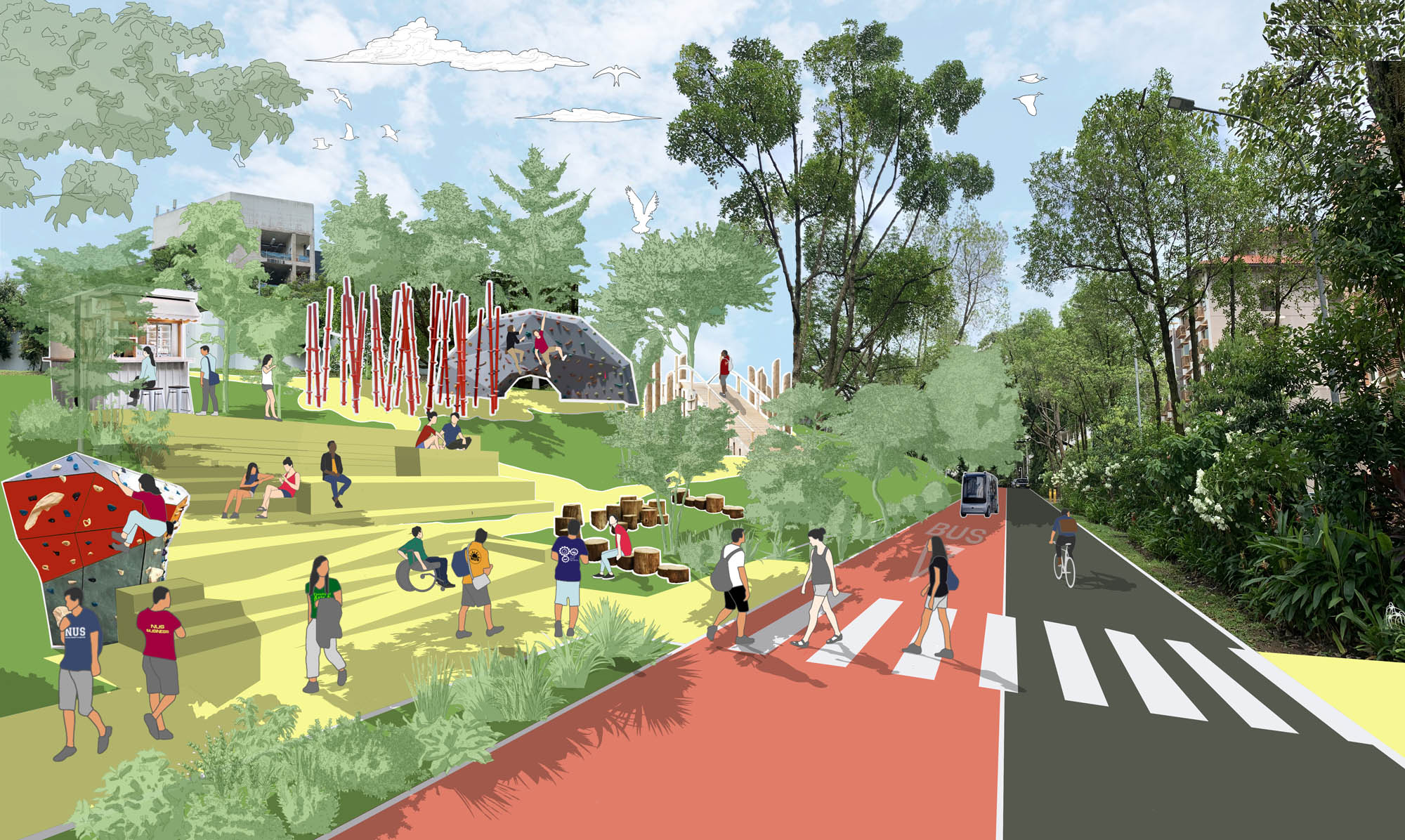Singapore reported a population density of 8,300 people per square kilometer* in 2025. As a city-state on the tropical equatorial belt, the Little Red Dot's urban governance is guided by the overarching 'City-in-Nature' vision to cope with increasing temperatures. The land-scarce nation also works towards supporting the 'Live-Work-Play' framework in their urban planning. Implemented top-down policies outline tangible factors to push for more sustainable, integrated developments. These can range from more straight-forward adoption of solar-powered systems to achieve climate goals, to allocating sufficient green accessible public areas that function to provide tropical heat relief and a relaxing outdoor place for people.
WY-TO.jpg)
Beyond regulations that ensure the sustainability of projects, we at WY-TO believe in leveraging empirical data to tailor scalable urban strategies for holistic plans. These can be done through three urban placemaking techniques that vary in permanence. They are Tactical Urbanism, Temporary Urbanism, and Transitory Urbanism. Theses programmatic approaches create temporary scenarios to assist decision-makers, practitioners, and ground-up leaders ingathering intangible insights like place characteristics. Accordingly, using them to evaluate the feasibility and receptiveness of an idea, nurture communities, or simply create a common ground for cultural exchange. From the perspective of our 'Well-being for All' research, these are objectives recorded across the principles of Diverse, Productive and Creative. Related strategies are grounded in the spirit of facilitating bottom-up innovation, experimentation and entrepreneurial activities. Through a strong infrastructure that supports all stages of research and implementation, people are encouraged to collaborate, fabricate and test placemaking typologies.
Starting with Tactical Urbanism*. The approach involves quick short-term placemaking initiatives to make good use of underutilised spaces. Typologies span from self-initiated pop-up markets to communities using festival as a catalyst to attract and expand their reach. For instance, the Singapore Design Week (SDW) an annual 2-week-long festival, provides a channel for programmes ranging in scale to be held through an open-call submission. The festival’s branding enables interested hosts to attract and make the most out of their self-initiated events. For example, ‘Find Your Folks @ Jalan Besar’, organised by Lopelab and Ice Cream Sundays, converted Hamilton Road in Singapore into a short-term art street, jam-packed with programmes. The hyperlocal curation saw pop-ups, installations and makers’ markets aligned with their 6 pillars – urban design, music, fashion, visual art, food, and urban sports. The final vibrancy burst of the FYF@Jalan Besar saw a 2-day ‘pedestrians only’ closure to cars at designated hours with activities spill onto the road, that also included PARK(ing)day initiative.
WY-TO.jpg)
The role of Temporary Urbanism* in revitalising urban areas is held by the perspective of ever-evolving needs. Phased planned with clear metrics and markers to prototype ideas and their series of combinations, the method focuses on active stakeholder participation in the concept, design and planning processes. Whether through on-the-ground community engagement or behavioural observation, the goal is to tailor strategically programmes before formalising any permanent interventions for the targeted audience. A relevant example is our tender proposal “The Living Campus” masterplan. To achieve the revamp vision of charting cohesive journeys for the current widespread faculties on the 150ha compound, we introduced the 15-minute village framework for the identified 5 areas. These villages are further augmented programmatically to fill in gaps relating to the ‘Live-Work-Play’ urban planning concept. Accordingly, a placemaking toolkit was derived, and an iterative community engagement plan designed to co-create, collaborate and imagine how each of the village identities will be nurtured, strengthened and evolved for a better sense of campus belonging.

Transitory Urbanism, as described by C40 Cities*, “is better suited to larger sites, and often happens with the view to longer-term transformation of the site as part of a city’s wider planning strategy.” In Singapore’s unique urban context, we define the time parameters of a 3-year or more urban placemaking strategy. Similar to Temporary Urbanism, the methodology experiments with different projects, but for a longer term, and with a specific aim to nurture a new prospective community or align people towards a collective goal. City Sprouts*, a social enterprise founded in 2019, exemplifies them. The organisation occupies large underutilised areas to create urban farm spaces in bringing nature into the city. These farm spaces are rented out as allotment plots for sustainable activities and programmes at a token rate to like-minded people. Tenants under City Sprouts management are required to fulfil their green commitments by collaborating with them to support green initiatives and nurture community synergy with other tenants. The success of their curated placemaking programming strategy now sees City Sprouts beyond their expansion to different places, but also a waiting list of interested tenants wanting to be part of the urban farmers movement.
THEWHOLEKICTHEN.jpg)
Placemaking in cities provides room for urban practitioners to collaboratively map a resilient and informed ecosystem with stakeholders –whether from top-down or ground-up. In cities with limited land such as Singapore, innovating meanwhile programmes can creatively nudge and encourage distinctive place identities to emerge. Thereby informing more resonant future urban planning. Communities contributing to the co-creation process can in turn, enliven their public experiences while optimising land use from the bottom up. As a result, shaping a loveable, resilient built fabric meant for all.